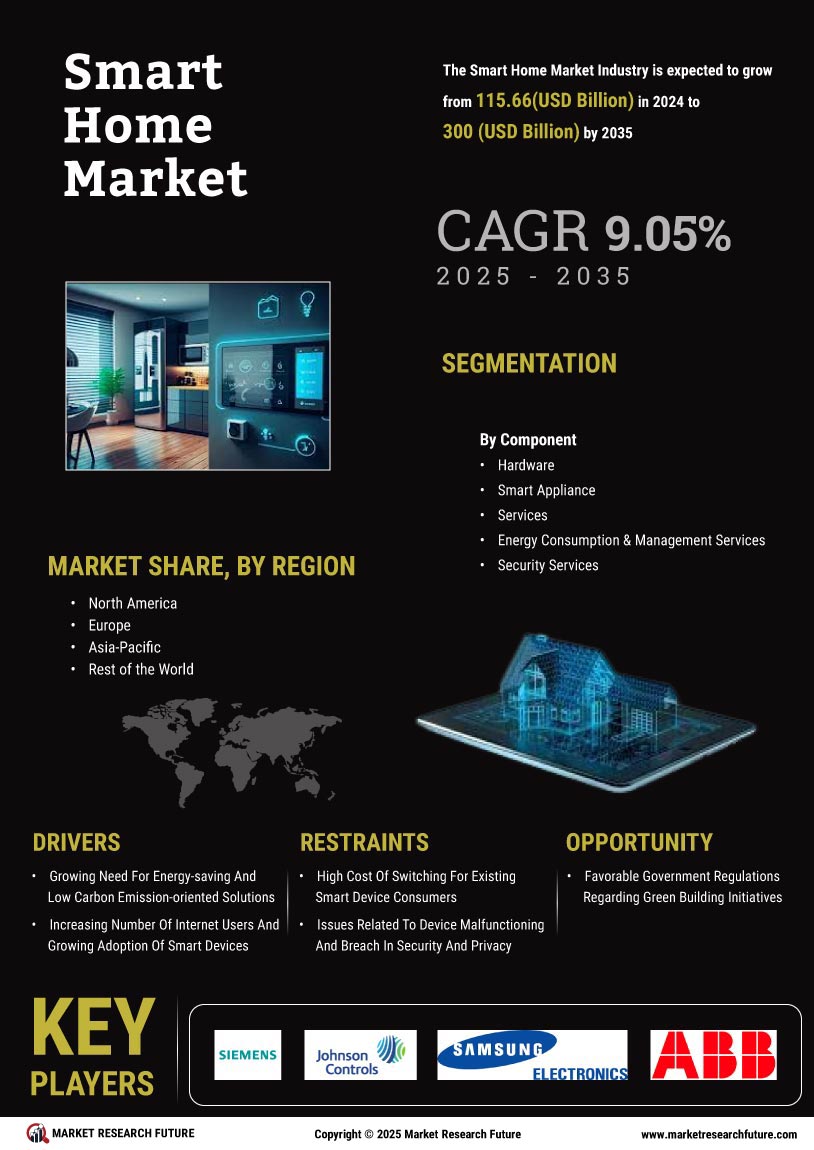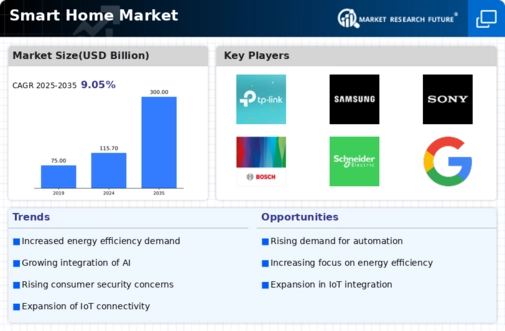The Smart Home Market is currently characterized by a dynamic competitive landscape, driven by rapid technological advancements and evolving consumer preferences. Major players such as Amazon (US), Google (US), and Samsung (KR) are at the forefront, each adopting distinct strategies to enhance their market positioning. Amazon (US) continues to leverage its extensive ecosystem, integrating smart home devices with its voice assistant, Alexa, thereby fostering a seamless user experience. Google (US), on the other hand, emphasizes its AI capabilities, enhancing its Nest product line to offer more personalized and intelligent home automation solutions. Samsung (KR) focuses on interoperability, promoting its SmartThings platform to unify various smart devices, which appears to resonate well with consumers seeking convenience and efficiency. Collectively, these strategies contribute to a competitive environment that is increasingly centered around innovation and user-centric solutions.
In terms of business tactics, companies are increasingly localizing manufacturing and optimizing supply chains to enhance responsiveness to market demands. The Smart Home Market is moderately fragmented, with a mix of established players and emerging startups. This fragmentation allows for diverse offerings, yet the collective influence of key players like Amazon (US) and Google (US) tends to dominate market trends and consumer expectations. Their ability to innovate and adapt to changing consumer needs significantly shapes the competitive structure.
In August 2025, Amazon (US) announced the launch of a new line of energy-efficient smart home devices, which aligns with the growing consumer demand for sustainability. This strategic move not only enhances Amazon's product portfolio but also positions the company as a leader in eco-friendly technology, potentially attracting environmentally conscious consumers. The emphasis on energy efficiency may also serve to differentiate Amazon in a crowded market, where sustainability is becoming a key purchasing criterion.
In September 2025, Google (US) unveiled an upgraded version of its Nest Hub, featuring enhanced AI capabilities that allow for more intuitive home management. This development underscores Google's commitment to integrating advanced technology into everyday life, thereby enhancing user engagement and satisfaction. The strategic importance of this upgrade lies in its potential to solidify Google’s position in the smart home ecosystem, as consumers increasingly seek devices that offer not just functionality but also intelligence and adaptability.
In October 2025, Samsung (KR) entered into a strategic partnership with a leading energy management firm to develop smart home solutions that optimize energy consumption. This collaboration is indicative of a broader trend towards integrating smart home technology with energy efficiency initiatives. By aligning with an energy management expert, Samsung (KR) not only enhances its product offerings but also addresses the growing consumer concern regarding energy usage, thereby reinforcing its market position.
As of October 2025, the Smart Home Market is witnessing significant trends such as digitalization, sustainability, and the integration of artificial intelligence. Strategic alliances are increasingly shaping the competitive landscape, enabling companies to pool resources and expertise to innovate more effectively. Looking ahead, competitive differentiation is likely to evolve from traditional price-based competition to a focus on innovation, technological advancement, and supply chain reliability. Companies that can successfully navigate these trends will likely emerge as leaders in the Smart Home Market.


















Leave a Comment